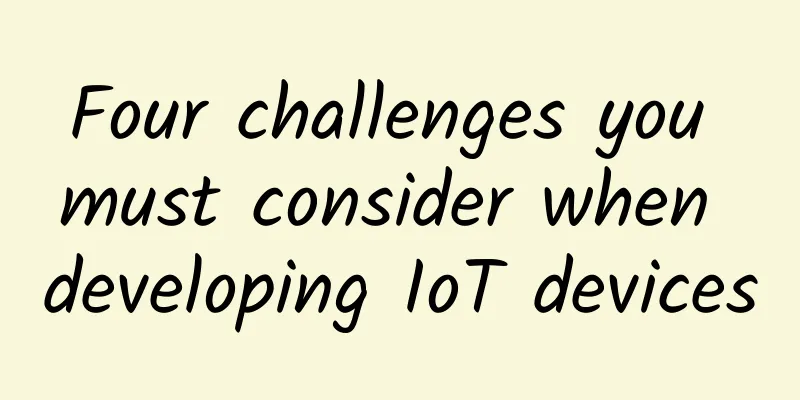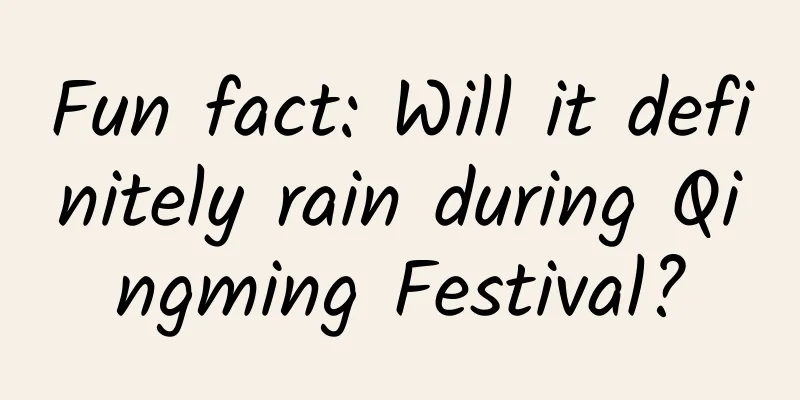Four challenges you must consider when developing IoT devices

|
Introduction The Internet of Things is a buzzword in today's technology industry. But it is also an undeniable reality. The Internet of Things has triggered the fourth industrial revolution, and whether we like it or not, it will inevitably become a part of our lives. The Internet of Things technology has gradually been applied to more and more industries, and more and more companies are trying to occupy a place in the future world of the Internet of Things.
The problem is that many companies are diving into IoT development without evaluating or understanding the key challenges that lie ahead of them. Many of these companies don’t even have a background in IT and software development, and most of them are focused on delivering Internet-connected devices, exposing them to the same competition. Even those with experience in software and hardware design often treat IoT like traditional computing and make terrible mistakes along the way. Time and again, such an approach has proven to be a disaster, becoming a self-defeating goal and undermining the integrity of the IoT by undermining the efforts of manufacturers. This article will present four challenges that all manufacturers and developers should carefully consider when deciding to enter the IoT industry. Connectivity The first thing to consider is how to connect the devices to the Internet and cloud computing platforms. This depends largely on the environment in which the devices are used and the type of communication infrastructure provided to them. For example, if you are creating a smart home device (like a connected toaster), you probably have access to a Wi-Fi home router or a ZigBee/Z-Wave IoT router; therefore, your device must be able to support one or more transmission mediums. However, in some environments - such as agricultural IoT or smart cars - there is no access to Wi-Fi networks, and mobile networks may be your only possible connection option. Therefore, you have to weigh your options and make design decisions based on the possibilities and investments each option offers. For example, since transmitting data to cloud services over cellular networks can be expensive, you might decide to prioritize functionality or use a blockchain model to build an IoT ecosystem that is less dependent on cloud computing. Of course, you also need to consider that the Internet of Things is a technology that is still in its early stages, is undergoing a lot of change and transformation, and there are too many mobile components and competing trends. Therefore, many technologies that are in use today are likely to become obsolete in the future. On the other hand, IoT devices are meant to have a longer lifespan than computers and smartphones, which are likely to be replaced every few years. For example, a smart refrigerator must work for at least 5 to 10 years. Therefore, you must develop a plan to ensure that your devices can maintain their connectivity as the IoT future takes shape and adapt to new technologies replacing old ones. I discuss this issue in more detail in my article https://techcrunch.com/2016/04/06/how-to-deal-with-iot-challenges-through-abstraction/. Security and Privacy Issues IoT security has always been a controversial issue. The first challenge to consider is that IoT security and privacy are fundamentally different from what we already know as network security. Here are some key security design points you need to consider: Physical security: IoT devices are often out in the wild, unattended and unprotected. You must ensure they can’t be tampered with by evil actors, hacked, or operated with a flat-head screwdriver. You must also protect any data stored on the device. While it’s expensive to embed security protection components into every IoT device, it’s still important to encrypt data on the device. Security of data exchange: Because data is transmitted from IoT sensors and devices to the gateway and from there to the cloud, data protection is also very important. This requires the use of encrypted transmission protocols, but IoT security is not just about encryption, but also about authentication and authorization. Security of cloud storage: Data stored in the cloud is as vulnerable as the rest of the IoT ecosystem. Your platform should be able to protect data stored in the cloud, which should include proper encryption and access controls. Updates: No matter how hard you harden your product code and hardware for security vulnerabilities, vulnerabilities will eventually surface. When this happens, you first need to have a plan to fix the bug and push out patches quickly (rather than letting the bug linger for a long, long time). Second, you need to be able to provide customers with an intuitive and secure way to get bug fixes. Today, over-the-air updates are a popular mechanism for updating connected devices, but you have to make sure they don't become a security vulnerability themselves. In terms of privacy, it should be taken into account that the data collected by IoT devices is subject to legal regulations. For example, fitness trackers can collect a lot of user information, which is protected by HIPAA (Health Insurance Portability and Accountability Act) in the United States. This means that if you store this type of information on a cloud server, you must ensure that it complies with legal regulations. As a rule of thumb, it’s best to anonymize customer data and avoid storing personally identifiable information in the cloud. This will ensure that you don’t incur legal penalties in the event of an incident. Flexibility and compatibility issues As the IoT landscape continues to change, you want to ensure your product can support future technologies. This requires the right balance in both software and hardware when designing your product. Creating specialized hardware for your device will give you the best performance, but it may also limit your ability to update your product. On the other hand, choosing the right amount of storage and computing resources and an operating system tailored specifically for IoT, such as Linux, Brillo, or Windows IoT, may result in reduced performance, but will give you more flexibility to scale your device to apply new features and patches. Some manufacturers go as far as to provide suitable APIs and SDKs, allowing developers to add functionality to their IoT devices. A good example of this is the Amazon Echo, an IoT gadget that can be programmed to be extended in a thousand different directions. Compatibility is also something to focus on when designing IoT products. Your IoT device should be able to seamlessly integrate with the user's IoT ecosystem without adding complexity or even frustration to the existing experience. This needs to be considered from both the software and hardware aspects. Ideally, consumers should not be forced to install new applications just because they have a new smart device in their home. Apple HomeKit and Samsung SmartThings are two examples of such platforms, both of which enable developers to provide users with new IoT features in a familiar environment. Data collection and processing In addition to security and privacy issues, you must also plan what to do with all the data you collect. First, you must assess the amount of data you produce and collect so that you can scale your cloud storage to meet the needs of your platform. But more important than that is what you do with the data you collect. IoT data is as valuable as gold; but if it is just sitting there in your servers, it is not. Therefore, you must anticipate the skills and tools needed to put your data to good use; this includes hiring data scientists and adopting the right analytics and machine learning tools to further extract actionable insights from the collected data. The data of the Internet of Things can perform a variety of practical functions, including the following aspects: Supplement existing data: Most businesses already have a wealth of data about their customers before they migrate to IoT. Combining that data with what IoT devices collect can lead to new business insights and increased revenue opportunities. Analyze and segment users: The data collected from IoT devices can also tell you a lot about the preferences and characteristics of your customers. Analyzing and categorizing IoT data can help businesses better understand the needs and preferences of their customers and, in turn, address them in a smarter way. Find opportunities to improve products: Proper analysis of IoT data can help understand which features should not be included in the product and which features need to be corrected to improve product efficiency and ease of use. It can also help to know what features are missing from existing products so that you know what to add to future products and software updates. summary In summary, there are many challenges involved in developing IoT products; some of the most prominent ones have been listed in this article. Not considering these challenges is like entering a dark tunnel without a flashlight; in this case, you have to grope your way forward with your hands and hope that you don't step into a trap. In fact, the list of challenges faced by IoT development can be much more complex and comprehensive. If you think there are other aspects that should be included in the list of IoT development challenges, please share them with us. |
<<: Huawei Developer Competition offline sharing session @ Huawei Connect Conference
>>: Using OpenSSL to convert private keys and certificates
Recommend
Geely and AutoNavi announced cooperation, Geely cars will be equipped with high-precision maps
At the Alibaba 2018 Global Investor Conference he...
PR software practice: 20 short video money-making lessons to teach you how to earn over 10,000 yuan a month
First of all, I would like to thank Liangmi Qingn...
Double 11 sales guide! It’s easy to acquire users by advertising like this!
Double Eleven is coming soon! For advertisers, Do...
How to prevent user churn?
The main tasks of user operations include: user a...
Osmanthus fragrans, Osmanthus sinensis, or Osmanthus fragrans? They all refer to the same plant!
"The plump ears of rice bring happiness to t...
Chinese scientific expedition team cleverly obtained the "core" from the bottom of Namtso Lake! Ancient climate code at a depth of 400 meters?
Author: Duan Yuechu and Huang Xianghong In the va...
Exploration of MQTT for iOS Development
[[183291]] 1. What is MQTT? MQTT (Message Queuein...
Lu Mingming · Xiaohongshu Hot Fan Training Class 5.0, help you easily play Xiaohongshu platform worth 1380 yuan
Lu Mingming · Xiaohongshu Fan Training Class 5.0,...
Do you know how much money the App Store has made you in the past ten years?
In recent years, the proportion of Apple's &q...
Elon Musk's "AI Demon Theory" is slandering the industry!
[[122220]] Translation/Chilongfei, Yang Hanshu, V...
618 JD Marketing Teaches You How to Create a Differentiated IP
Although 618 brings with it scarce and large traf...
How much does it cost to develop a Qujing steel mini program? What is the quotation for the development of Qujing Steel Mini Program?
There is no doubt that the topic of mini programs...
2019 Pinduoduo APP product analysis report!
This article intends to analyze how Pinduoduo has...
Analysis of 10 high-conversion detail page cases on 3 major traffic platforms!
At present, there are already many articles on th...
It’s been two years since Tianwen landed on Mars. Let’s see whose hometown has landed on Mars?
May 15th marks the second anniversary of Tianwen-...


![[Tai Er Pickled Cabbage Fish] How much is the franchise fee_How is Tai Er Pickled Cabbage Fish_Tai Er Pickled Cabbage Fish official website phone number](/upload/images/67cc3f0fc214c.webp)






